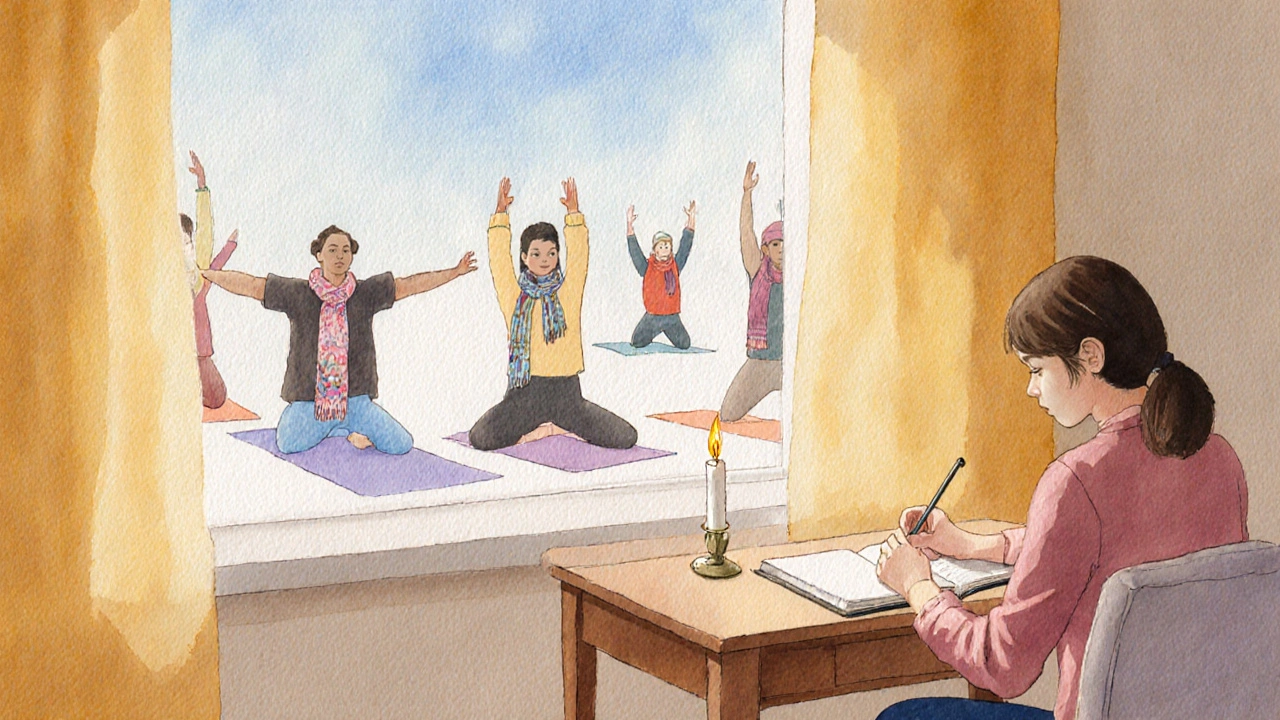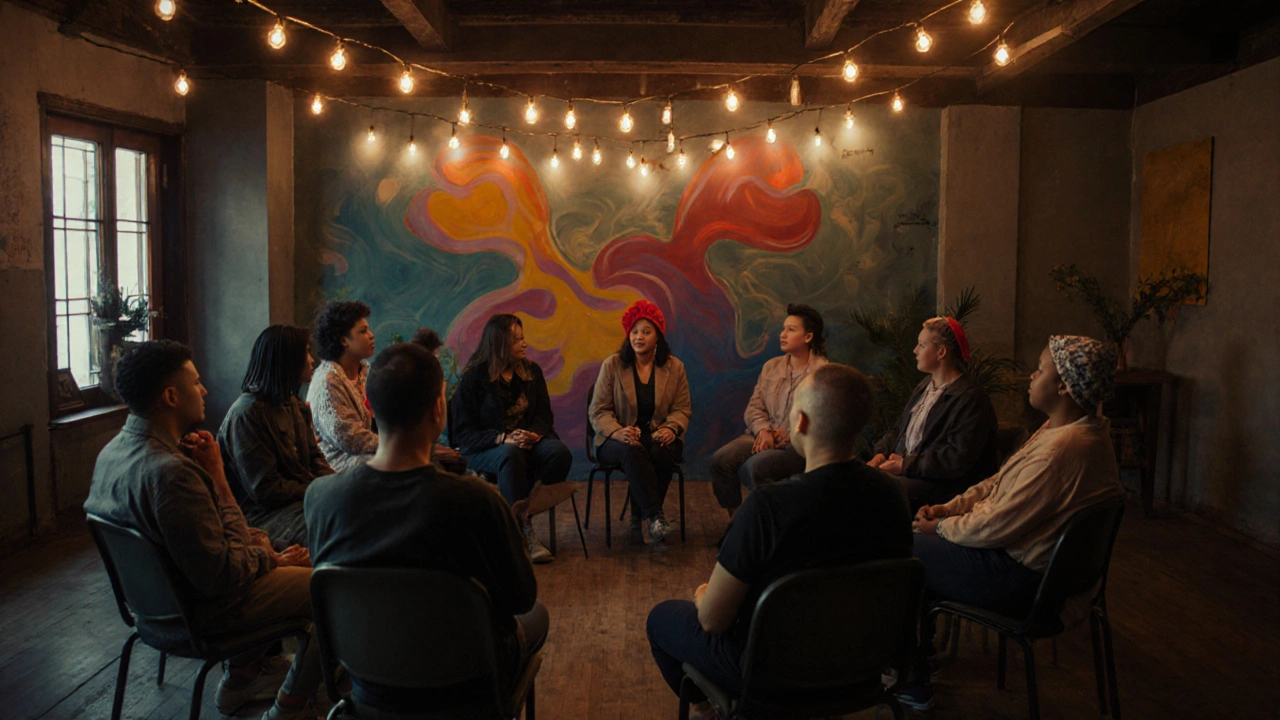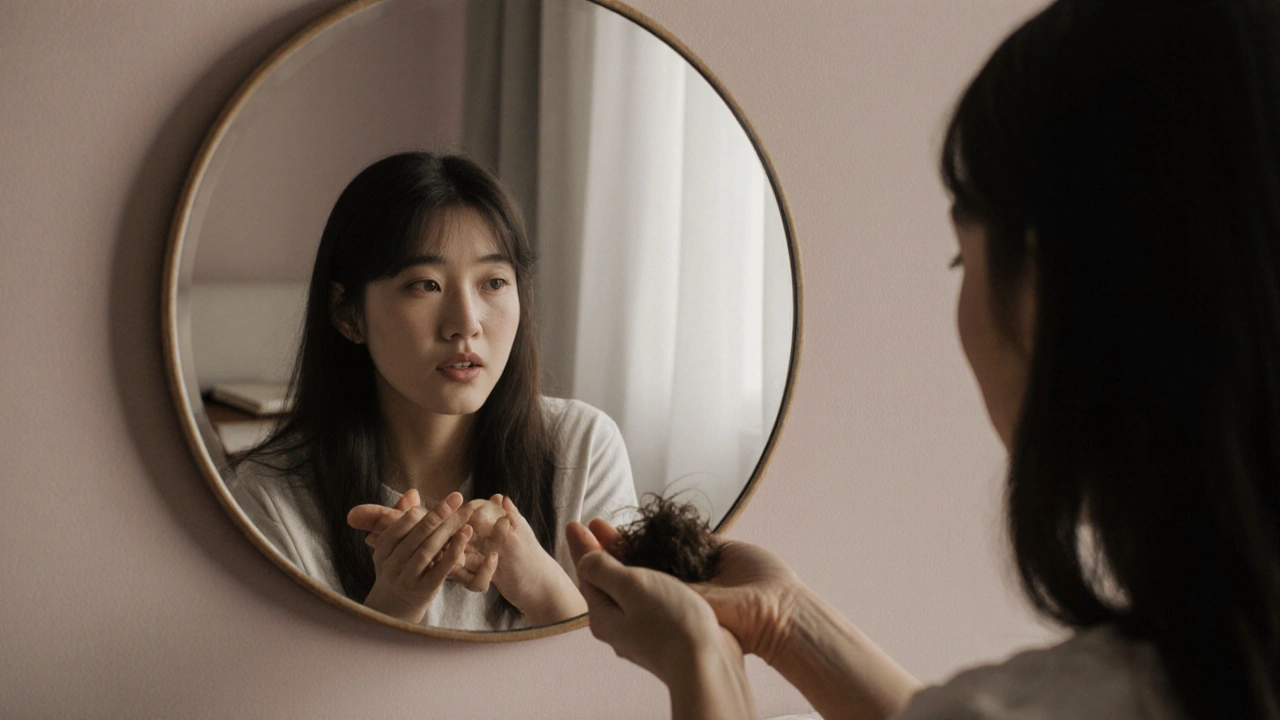Alopecia Emotional Journey Tracker
This tool helps you recognize the emotional stages that often occur when living with alopecia. Each stage is part of a natural process, and understanding them can help you navigate your journey with greater awareness and compassion.
Denial
"It must be temporary; my hair will grow back soon."
Anger
"Why me? This isn't fair!"
Bargaining
"If I try this new shampoo, maybe it will stop."
Depression
"I feel invisible; I avoid mirrors and photos."
Acceptance
"I'm learning to love my look and share my story."
Growth
Developing resilience and self-compassion.
Self-Love
Embracing your authentic self with confidence.
Community
Connecting with others for shared experiences and support.
Personal Reflection Journal
Track your current emotional stage and coping strategies:
Your Coping Toolkit
| Strategy | Primary Benefit | How to Start | Status |
|---|---|---|---|
| Journaling | Emotional clarity | Buy a notebook; write 5 minutes each night | Not Started |
| Mindfulness Meditation | Stress reduction | Use a free app; focus on breathing for 3 minutes | Not Started |
| Physical Activity | Mood boost | Join a local walking group or online yoga class | Not Started |
| Creative Expression | Identity redefinition | Experiment with scarves, hats, or paint | Not Started |
Tips for Supportive Friends & Family
- Listen without offering unsolicited advice
- Avoid comments on appearance unless invited
- Offer to accompany them to appointments
- Help them find resources
- Celebrate small milestones
When alopecia is described as an autoimmune condition causing hair loss, the focus often lands on medical treatments. Yet the real story lives in the daily feelings of the people who wear the condition. From the shock of the first clump to the steady confidence built through community, the emotional journey is as unique as each individual.
Key Takeaways
- Alopecia triggers a range of emotions that often mirror the grief cycle.
- Early self‑acceptance can reduce long‑term mental‑health risks.
- Practical coping strategies - from journaling to mindfulness - provide tangible relief.
- Support groups and online communities are vital sources of empathy and information.
- Professional help, especially from dermatologists and mental‑health specialists, improves outcomes.
What Is Alopecia?
Alopecia is a group of autoimmune disorders that lead to partial or total hair loss. The most common form, Alopecia Areata, affects about 2% of the population at some point. Unlike hair loss from aging or chemotherapy, these patches can appear suddenly, leaving many feeling blindsided.
Understanding the medical backdrop helps contextualise the emotional response. When the immune system mistakenly attacks hair follicles, it triggers inflammation, and the visible result is often a source of social anxiety.
The Emotional Stages: From Shock to Self‑Compassion
People living with alopecia frequently experience feelings that mirror the classic five‑stage grief model - denial, anger, bargaining, depression, and acceptance. Below is a quick snapshot of each phase and typical thoughts that arise.
- Denial: "It must be a temporary thing; my hair will grow back soon."
- Anger: "Why me? This isn’t fair!"
- Bargaining: "If I try this new shampoo, maybe it will stop."
- Depression: "I feel invisible; I avoid mirrors and photos."
- Acceptance: "I’m learning to love my look and share my story."
These stages rarely follow a strict order, and many bounce back and forth. Recognising the pattern can reduce frustration and help individuals seek support at the right moment.

Practical Coping Strategies
While emotions are inevitable, there are concrete actions that can cushion the blow.
- Journaling records daily feelings and tracks triggers - writing down moments of anxiety reveals patterns you can address.
- Mindfulness meditation focuses on breath to calm the nervous system - even five minutes a day lowers cortisol, the stress hormone.
- Physical activity releases endorphins that improve mood - group classes provide both exercise and social connection.
- Creative expression art, music, or fashion can reframe identity - many find confidence in bold hairstyles or headwear.
Combining several of these techniques creates a personal toolkit that can be pulled out when anxiety spikes.
| Strategy | Primary Benefit | How to Start |
|---|---|---|
| Journaling | Emotional clarity | Buy a notebook; write 5 minutes each night |
| Mindfulness meditation | Stress reduction | Use a free app; focus on breathing for 3 minutes |
| Physical activity | Mood boost | Join a local walking group or online yoga class |
| Creative expression | Identity redefinition | Experiment with scarves, hats, or paint |
Finding Your Tribe: Support Groups and Communities
Isolation is a common side‑effect of alopecia. Connecting with others who understand the daily reality can dramatically lift spirits.
- Local meet‑ups: Many hospitals host monthly gatherings with a dermatologist and a mental‑health counselor present.
- Online forums: Platforms like Reddit’s r/Alopecia and dedicated Facebook groups provide 24/7 peer advice.
- Advocacy organizations: The National Alopecia Areata Foundation offers webinars, mentorship programs, and research updates.
When you share your story, you often receive a wave of empathy that counteracts the stigma many feel in public spaces. Remember, being open about your condition can also educate those around you, turning strangers into allies.
Professional Help: Dermatologists and Mental‑Health Specialists
Medical expertise is essential, not just for treatment options but also for emotional support. A board‑certified dermatologist specializes in skin and hair disorders can discuss topical immunotherapy, steroid injections, or emerging JAK inhibitors.
Equally important is partnering with a therapist who understands body‑image concerns. Cognitive‑behavioral therapy (CBT) helps re‑frame negative thoughts, while counseling can address anxiety or depression that may arise.
Insurance often covers both dermatology visits and mental‑health sessions, so check your benefits. If cost is a barrier, many nonprofits offer sliding‑scale counseling for people with alopecia.

Real Stories: Voices from the Journey
Emma, 27, describes her first month after diagnosis: “I stopped looking at myself in the mirror. Every compliment felt like a lie.” She began attending a university support group, where a fellow student suggested a simple habit - writing one positive affirmation each morning. “That tiny ritual shifted my focus from loss to gratitude,” Emma says.
Marcus, 45, chose a bold approach: he started wearing custom‑made hats and documented his style on Instagram. “The comments weren’t just about my hair; they were about confidence,” he notes. Through his online presence, Marcus connected with a worldwide community, turning a personal challenge into a platform for advocacy.
These narratives prove that there is no single path. Whether you gravitate toward quiet reflection or public advocacy, each story contributes to a larger tapestry of resilience.
Tips for Friends, Family, and Allies
Supporting someone with alopecia doesn’t require expertise, just empathy.
- Listen without offering unsolicited advice. Sometimes a simple "I’m here for you" matters more than any solution.
- Avoid comments on appearance unless invited. Focus on the person, not the hair.
- Offer to accompany them to dermatologist appointments if they want company.
- Help them find resources - reputable websites, local groups, or counseling services.
- Celebrate milestones, no matter how small - a new hat, a confidence‑boosting photo, or a journal entry.
Frequently Asked Questions
Can alopecia ever regrow hair on its own?
In many cases, patches can spontaneously regrow within a year, especially in children. However, the pattern is unpredictable, and some individuals experience permanent loss.
Is alopecia considered a mental health disorder?
No, alopecia is a physical autoimmune condition. However, its impact on self‑esteem and social interaction often leads to anxiety or depression, making mental‑health support crucial.
Do wigs or head coverings affect the underlying condition?
Wearing wigs, scarves, or hats does not worsen alopecia. Choose breathable fabrics to keep the scalp healthy and avoid irritation.
What are the most common emotional triggers for someone with alopecia?
Triggers often include first‑time public exposure (e.g., photos), comments about hair, and medical appointments where hair loss is discussed.
Are there support groups specifically for teenagers with alopecia?
Yes, many organizations run youth‑focused chapters, both in‑person and online, offering age‑appropriate counseling and peer mentorship.
Living with alopecia is more than a medical journey; it’s an emotional evolution. By recognizing the feelings that surface, equipping yourself with coping tools, and leaning on both professional and community support, you can transform uncertainty into empowerment.

